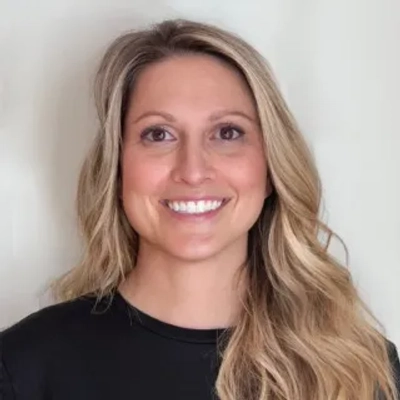11 Ways Optometrists Make Patients Feel Cared for
Eye care professionals play a crucial role in maintaining and improving patients' vision health. This article explores innovative ways optometrists are enhancing patient care, drawing insights from experts in the field. From tailored solutions for specific work environments to proactive approaches in vision care, discover how these practices are transforming the patient experience.
- Optometrist Tailors Solution to Retail Environment
- Personalized Care Addresses Work-Related Eye Strain
- Stress-Aware Eye Exam Improves Mental Health
- Proactive Vision Care Enhances Patient Education
- Optometrist Links Eye Health to Therapy Sessions
- Designer's Workflow Optimized Through Specialized Lenses
- Validating Pregnancy-Related Vision Changes Provides Hope
- Night Vision Test Acknowledges New Parent Challenges
- Optometrist's Foresight Prevents Occupational Eye Hazards
- Workplace-Specific Eye Care Elevates Hospitality Service
- Comprehensive Eye Exam Transforms Patient Experience
Optometrist Tailors Solution to Retail Environment
Having run Scrubs of Evans for over 16 years, I've worked with countless healthcare professionals who deal with eye strain from long shifts under harsh hospital lighting. My optometrist noticed I was constantly adjusting my position during eye exams and inquired about my daily routine at the store.
Instead of rushing through the appointment, she spent extra time explaining how retail lighting affects vision differently than medical facilities. She recommended specific lens coatings that would help me transition between the bright fluorescent lights in my shop and the natural lighting when meeting with uniform vendors.
What impressed me most was when she called two weeks later to check how the new prescription was working during my busiest inventory days. She understood that small business owners can't afford downtime for vision adjustments, especially when handling detailed work like uniform sizing and fabric quality checks.
This attention to my actual work environment made me completely rethink how I serve healthcare workers at my store. Now when customers come in complaining about uniform fit issues, I ask about their specific work conditions - such as whether they're frequently bending over patients or working in surgery suites with different lighting.
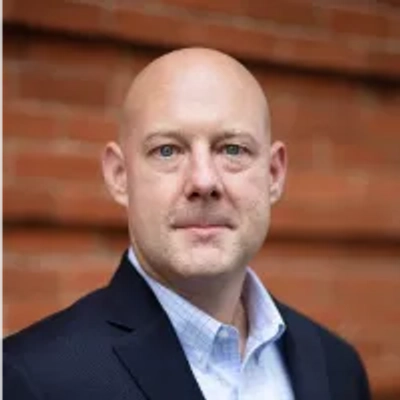
Personalized Care Addresses Work-Related Eye Strain
As someone who has built healthcare businesses for over 20 years before founding Tides Mental Health, I've experienced both sides of patient care. My optometrist impressed me during a particularly stressful period when I was evaluating multiple healthcare acquisitions simultaneously.
During what should have been a routine eye exam, she noticed I kept rubbing my temples and squinting at documents. Instead of just checking my prescription, she asked detailed questions about my work reviewing financial statements and due diligence materials for 12+ hours daily. She realized the eye strain was contributing to my stress headaches.
She scheduled a follow-up specifically to test my vision while reviewing actual investment memorandums I brought in. The lighting and angles she used during testing replicated my home office setup exactly. This led to computer-specific lenses that eliminated my headaches within two weeks.
That experience of truly personalized care shaped how we approach mental health at Tides - we offer flexible scheduling and can often see clients within 24-48 hours because I learned how small details in healthcare delivery can dramatically impact someone's daily life and work performance.
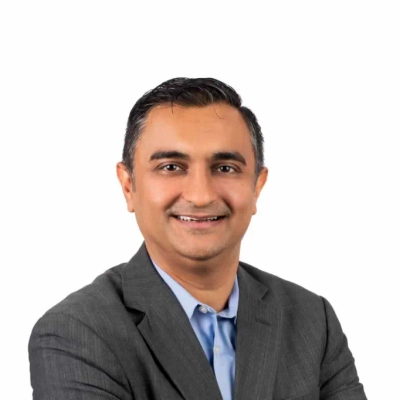
Stress-Aware Eye Exam Improves Mental Health
I've spent over a decade in mental health, but my most memorable healthcare experience was actually with my optometrist during a particularly overwhelming period when I was launching Think Happy Live Healthy in 2018.
Instead of rushing through my appointment, she noticed I kept rubbing my temples and asked how I was sleeping. When I mentioned the stress of starting my practice while working full-time in Fairfax County schools, she didn't just update my prescription - she spent 15 minutes explaining how eye strain connects to stress and recommended specific screen break techniques.
What struck me was her follow-up call two weeks later to check if the adjustments were helping. That level of personal investment reminded me why I left traditional systems to create our warm, responsive approach at Think Happy Live Healthy.
This experience shaped how we handle intake - our referral coordinator always follows up within hours, not days, because those small touches make people feel genuinely cared for rather than processed through a system.
Proactive Vision Care Enhances Patient Education
As someone who has built Complete Care Medical from two employees to serving over 50,000 customers, I've experienced healthcare from both sides - as a patient and as someone who works with medical providers daily.
My optometrist completely changed my perspective on patient care when he took extra time to explain why my prescription had shifted after turning 50. Instead of just handing me new glasses, he walked me through how aging affects vision and what to expect in coming years. He even drew a simple diagram showing how my eye muscles were changing.
What really impressed me was when he proactively scheduled my next appointment for six months instead of the usual year, explaining that vision changes can accelerate in your 50s and catching them early prevents bigger problems. This reminded me exactly why we implemented 30- and 90-day supply schedules with personal reorder reminders at Complete Care - anticipating patient needs before they become urgent issues.
That experience directly influenced how we train our patient care specialists to educate customers about their urological supplies and health conditions, not just process orders. When patients understand the "why" behind their care, compliance improves and health outcomes get better.
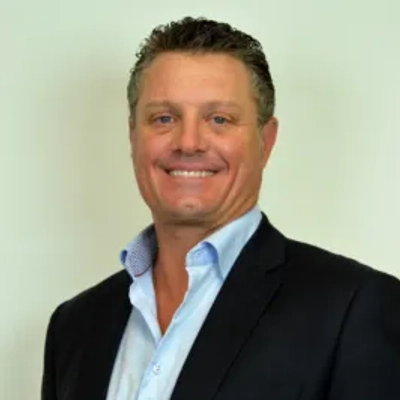
Optometrist Links Eye Health to Therapy Sessions
As a clinical psychologist, I've learned that the most powerful moments in healthcare occur when practitioners truly listen to what's not being said. My optometrist demonstrated this during what I thought would be a routine check-up when I mentioned having headaches after long therapy sessions.
Instead of just testing my vision, she asked detailed questions about my work environment - the lighting in my office, how I position myself during sessions, and even the emotional weight of my work. She recognized that eye strain wasn't just about prescription strength but about the cumulative stress of maintaining focus during intense psychological work.
What struck me most was when she suggested specific blue light filtering that would help during evening telehealth sessions, which had become more common post-pandemic. She understood that my work doesn't stop at 5 PM and that many of my trauma clients prefer evening appointments when they feel safer processing difficult emotions.
This experience reinforced something I see daily at MVS Psychology Group - patients remember how you made them feel understood more than any specific technique you used. When healthcare providers connect your symptoms to your actual lived experience, that's where real healing begins.

Designer's Workflow Optimized Through Specialized Lenses
As someone who has built over 1,000 websites across 8 years, I spend 12+ hours daily staring at screens designing intricate layouts and typography. My optometrist completely transformed my work life when she didn't just test my vision, but actually asked to see examples of the detailed design work I do.
She pulled up my laptop and watched me work on a client's Shopify store for several minutes, observing how I squinted at pixel-perfect spacing and color gradients. Instead of standard computer glasses, she prescribed specialized lenses with blue light filtering specifically calibrated for design work - not just general screen time.
The breakthrough moment came when she suggested adjusting my monitor height and lighting setup right in her office. She had me bring my laptop and showed me optimal positioning that reduced eye strain during those marathon website builds that used to leave me with headaches.
Six months later, I'm completing projects 20% faster without the constant eye fatigue that used to slow me down by mid-afternoon. That attention to my actual workflow, not just generic "computer use," made all the difference in both my health and business productivity.

Validating Pregnancy-Related Vision Changes Provides Hope
Working as a Clinical Psychologist for 15+ years, I've learned that healthcare providers who truly listen make all the difference. My optometrist noticed I was experiencing severe headaches during my pregnancy with hyperemesis gravidarum (HG) - a condition that affects only 1-3% of pregnancies.
Rather than dismissing my symptoms as "normal pregnancy issues," she took time to understand how the constant nausea and vomiting were affecting my vision and eye strain. She found my prescription had shifted significantly due to hormonal changes and dehydration, something I hadn't connected to my worsening headaches.
She adjusted my prescription temporarily and explained how pregnancy can alter vision, validating that my experience wasn't "in my head." This prevented additional stress during an already challenging time when I was struggling to continue working in the NHS.
The impact extended beyond just better vision - having a healthcare provider acknowledge my symptoms as real and treatable gave me hope during one of the darkest periods of my life. It's why I now help other parents navigate health challenges that impact their work and wellbeing through Know Your Mind Consulting.

Night Vision Test Acknowledges New Parent Challenges
I'm a therapist who specializes in helping parents through postpartum struggles and birth trauma, so I spend a lot of time thinking about how healthcare providers can make vulnerable patients feel truly seen.
My optometrist completely changed my experience when I came in exhausted from new parenthood - constantly sleep-deprived and struggling with eye strain from late-night feedings. Instead of just checking my prescription, she asked about my daily routine and how often I was doing night feeds in dim lighting.
She adjusted the exam room lighting to match what I'd experience during 3 AM baby care, then tested my vision under those specific conditions. This revealed that my eyes were working overtime to focus in low light, contributing to my headaches and fatigue.
What really struck me was when she said, "Let's make sure you can see your baby clearly during those precious quiet moments, even when you're exhausted." That single comment showed she understood the emotional weight of early parenthood, not just the clinical vision needs. As someone who helps parents feel heard in therapy, I recognized immediately how powerful it felt to have my real life acknowledged rather than dismissed.

Optometrist's Foresight Prevents Occupational Eye Hazards
Running a fencing business for over 7 years has taught me that genuine care in any service industry comes down to one thing: anticipating problems before they become expensive headaches.
My optometrist saved me thousands last year when she noticed I was rubbing my eyes during our appointment. Instead of just checking my vision, she asked about dust exposure at work sites. It turns out, I'd been getting constant eye irritation from sawdust and metal filings without realizing the long-term damage I was risking.
She prescribed protective eyewear specifically rated for construction work and explained how debris could cause permanent corneal scarring. What impressed me most was her follow-up call three weeks later asking if the safety glasses were comfortable during long installation days. That proactive approach reminded me why we do site assessments before quoting - it's about preventing issues, not just fixing them.
This experience changed how I train my crew on job sites. We now emphasize protective equipment not because it's required, but because small preventive measures today avoid major problems tomorrow. Just like that optometrist connected my work environment to my health, we connect our clients' property needs to long-term durability solutions.
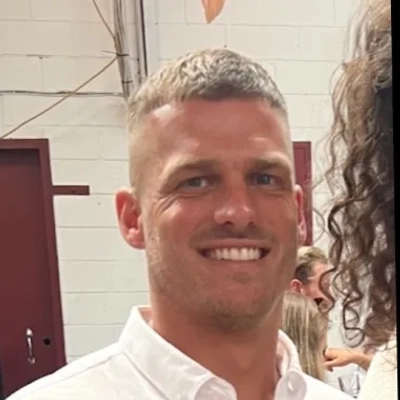
Workplace-Specific Eye Care Elevates Hospitality Service
I experienced a series of recurring eye infections while working 14-hour shifts in the hotel hospitality industry in London. My optometrist could have simply prescribed drops and sent me on my way, but she took the time to inquire about my work environment and daily routine.
She discovered that the combination of hotel air conditioning systems and constantly switching between dim reception areas and bright outdoor spaces was causing my eyes to dry out severely. Instead of just treating the symptoms, she taught me to blink more deliberately when greeting guests and suggested I keep preservative-free drops at three different stations around the hotel.
What really impressed me was that she followed up two weeks later with a quick call to check how the infections were clearing up. This wasn't a billable visit - just genuine care to ensure her recommendations were working in my real-world environment.
That experience taught me how important follow-through is in customer service, which I now apply at Rattan Imports. When we help someone design their patio space, we check in a month later to see how they're enjoying their new furniture setup. This personal touch has turned many one-time buyers into customers who bring us their friends and family.

Comprehensive Eye Exam Transforms Patient Experience
An optometrist once took extra time during a routine eye exam to discuss how my vision concerns could affect daily tasks, such as driving and screen use, rather than focusing solely on test results. They demonstrated proper lens cleaning techniques, suggested subtle adjustments to my workspace, and answered all my questions without rushing.
This level of personalized attention made me feel genuinely heard and valued, transforming the appointment from a procedural visit into a meaningful care experience. It increased my trust in their recommendations, improved my adherence to vision care routines, and set a standard for how attentive, thoughtful communication can enhance both patient confidence and long-term eye health outcomes.



